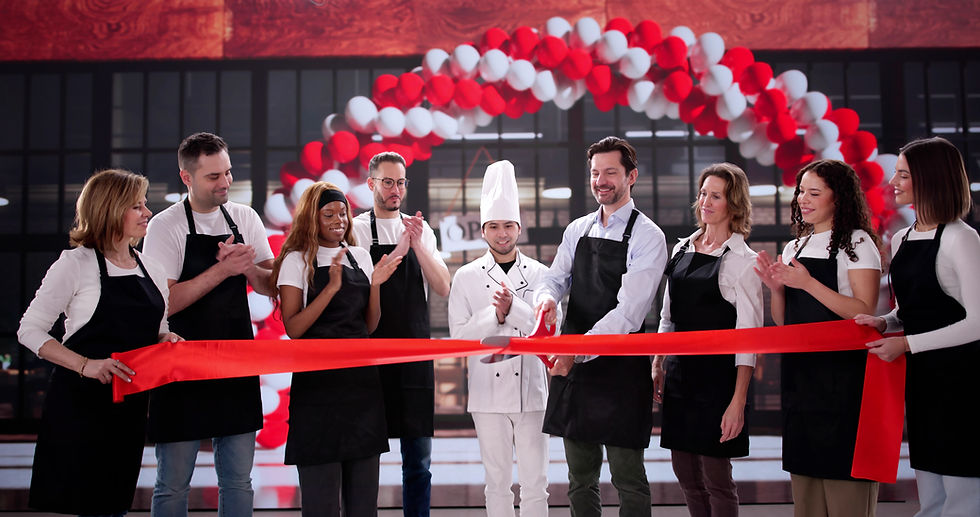Raising a Glass to Tradition
- Stephen Hammond
- Oct 23
- 3 min read

Being born in London, Greenwich to be precise, I grew up around my grandfather, uncles, and dad, all frequenting the local pubs in the area almost on a daily basis. It was part, the main part, of London males' social life, especially after they finished work: a couple of swift pints on the way home before dinner with the wife and kids.
Pubs were the hub of London life; smoke-filled bars, dart boards, and often a piano in the corner that was played by one of the customers most Friday and Saturday nights.
There was no TV showing live sports, and no waiter service was available at the tables. You went to the bar, ordered your drink, paid for it, and went to sit in your favourite chair or simply plonked yourself on a bar stool to gossip with the barmaid, normally a 40+ year lady with dyed blond hair, full of laughter and always a good listener to your stories.
Step inside an English pub today, and you step into more than just a place to drink; you step into a living tradition. Rooted in history yet endlessly adaptable, the pub has served as the social heart of communities for centuries, offering warmth, comfort, and conviviality in equal measure. For visitors and locals alike, it remains one of the most authentic cultural experiences England has to offer.
From Alehouses to “The Local”
The story of the pub stretches back nearly two millennia, to the roadside taverns of Roman Britain. By the Middle Ages, “alehouses” and “inns” dotted towns and countryside alike, serving travelers and tradesmen. The word “pub” itself, short for “public house,” came into everyday use in the 17th century, distinguishing these establishments as open to all.
Over time, pubs became a vital social hub, somewhere to share news, celebrate milestones, and gather for music, darts, or simply a quiet pint. Today, the idea of “the local”, a regular pub at the heart of one’s neighborhood, remains a cherished part of English life.
A Home Away from Home
No two pubs are quite alike, and that’s the biggest part of their charm. Some are centuries-old coaching inns with creaking wooden beams, roaring fireplaces, and stories soaked into the walls. Others today are modern gastropubs, marrying rustic décor with a sleek and modern design.
Whether you’re in a bustling city tavern or a tranquil country inn, a good pub radiates an easy-going warmth that invites conversation between strangers and friends alike.
The atmosphere often reflects its community; a riverside pub might host rowing teams, while a village local might sponsor the cricket club. What unites them all is a spirit of welcome and belonging. If you walk in and talk to someone, you quickly become a ‘local’, a member of the community, especially in country pubs.

A Culinary Revival
Once known mainly for hearty but simple meals, pies, stews, and Sunday roasts, pub cuisine has undergone a huge transformation. The gastropub movement of the 1990s elevated pub dining to a different level, with chefs preparing seasonal, locally sourced ingredients. Today, menus might feature everything from beer-battered fish and chips to wild mushroom risotto or slow-braised lamb shoulder.
A Sunday roast lunch remains an institution, featuring roasted meats, Yorkshire puddings, crisp roast potatoes, fresh boiled vegetables, and plenty of gravy. Sunday lunches at pubs are frequently enjoyed with family or friends, often lasting for hours. For many, it is the highlight of the week.
Ales, Ciders, and Beyond
No feature on English pubs would be complete without a nod to their liquid heart: beer. Traditional cask ales, often hand-pulled at the bar, remain the ultimate choice. Brewed without artificial carbonation, these ales are celebrated for their depth of flavor and natural character, maintained by organizations like CAMRA (the Campaign for Real Ale).
Alongside these classics, the craft beer boom has introduced bold new styles, including IPAs, stouts, and lagers, many of which are brewed by independent microbreweries. Cider, too, has a devoted following, particularly in the West Country. And for non-beer drinkers, wine, cocktails, and no-alcohol alternatives are now standard fixtures on most pub menus.

Tradition Meets Innovation
As lifestyles have evolved, so too have pubs. Many now double as live music venues, coworking spaces, or centers and meeting points for artisan markets. Sometimes in big pub car parks, as very few people take their cars to the pub these days, as drinking and driving are no longer accepted by most people. Yet at their core, pubs remain a place where hospitality is personal, unpretentious, and rooted in community.
For the hospitality industry, the English pub is both a symbol of heritage and a canvas for innovation. It proves that authenticity never goes out of fashion, and that a warm welcome, a well-kept pint, and a hearty meal can still bring people together like nothing else.



